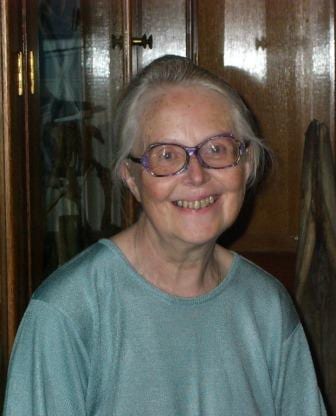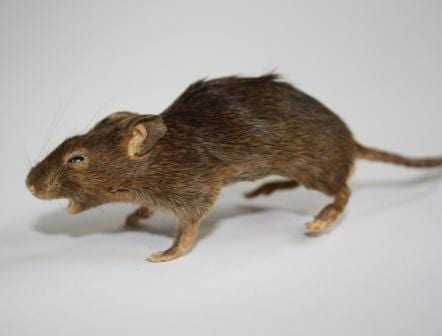On the Origin of Our Specimens: The Down Years
By Emma-Louise Nicholls, on 17 April 2014
The collection of specimens, known since 1997 as the Grant Museum of Zoology, was started in 1827 by Robert E. Grant. Grant was the first professor of zoology at UCL when it opened, then called the University of London, and he stayed in post until his death in 1874. The collections have seen a total of 13 academics in the lineage of collections care throughout the 187 year history of the Grant Museum, from Robert E. Grant himself, through to our current Curator Mark Carnall.
Both Grant and many of his successors have expanded the collections according to their own interests, which makes for a fascinating historical account of the development of the Museums’ collections. This mini-series will look at each of The Thirteen in turn, starting with Grant himself, and giving examples where possible, of specimens that can be traced back to their time at UCL. Previous editions can be found here.
 Number Eleven: Rosina Down (1971-1994)
Number Eleven: Rosina Down (1971-1994)
Down was born in Illford, or Essex as it was called in those days. After leaving school she began work in 1957 as a laboratory technician at John Howard School for Girls, in East London. After two years she moved on to take the position of laboratory technician at Coburn School for Girls in 1959. During this time, Down attended Paddington Technical College (now Westminster University) at which previous Grant Museum curator Reg Harris taught evening classes for natural history technicians. Down was also taught here for a time by another former curator Roy Mahoney, who took over the evening classes from Reg Harris in the mid 1950s.
In 1961 Down was offered a boost up the career ladder at the College of St Mark and St John, Chelsea, London, where she became the senior science technician. Down remained there for a decade, until she followed in the footsteps of her former tutors, Reg Harris and Roy Mahoney, and became curator of the Grant Museum in 1971.
Down did not shy away from getting involved in various subject specialist networks, groups and committees. Amongst her many accolades, she was a founder member of the Biology Curators Group (now the Natural Sciences Collections Association, or NatSCA),a founder member of University Museums Group and a founder member of UCL Curators and Archivists Group. Down was also a member of the Geology Curators Group, the Area Museums Service Natural Sciences Panel, the South Eastern Natural Science Collections Research Unit and the Guild of Taxidermists.
When Down came to UCL, the collections were not on display. Instead, due to a reduction of space and the replacement of the 1850s vertebrate display cases, the collections were in storage. However the university courses still required specimens for their practical sessions so the collections were constantly being accessed. Despite the chaotic sounding logistics of the time, a eureka moment came as a result of the upheaval. The museum owned two equid skeletons, both labelled as zebra. There had been rumours that the larger of these two specimens was possibly a quagga, an extinct subspecies of zebra, and as such, the rarest skeleton in the the world. As the ‘potential quagga’ had to be taken off of display to be boxed up anyway, Down sent the skeleton pre-disarticulation to the Natural History Museum, then the BMNH, for identification in 1972. The skeleton was verified by Alan Gentry in the palaeontology department as a quagga, one of five known at the time. In 2014, it is one of only six currently confirmed quagga skeletons in existence.
 In the early 1970s, Down moved the collection to UCL’s Medawar Building where much of it was put back on display as in the photo on the right. In the late 1970s, Down introduced a new card index system for the Museum collections. The new system of recording was implemented according to the Museum Documentation Association’s guidelines, with the idea that the MDA cards would be computerised at a later stage. In an historic account of life at the Grant Museum during this time, Down wrote that “Weldon’s complaint of 1895 that “owing to the large amount of work entailed by heavy classes in the laboratory it has not been found possible to do quite as much in the museum as was achieved in the earlier years” still applies”. She also recalls how the collections were fairly frequently flooded due to the Animal House directly above.
In the early 1970s, Down moved the collection to UCL’s Medawar Building where much of it was put back on display as in the photo on the right. In the late 1970s, Down introduced a new card index system for the Museum collections. The new system of recording was implemented according to the Museum Documentation Association’s guidelines, with the idea that the MDA cards would be computerised at a later stage. In an historic account of life at the Grant Museum during this time, Down wrote that “Weldon’s complaint of 1895 that “owing to the large amount of work entailed by heavy classes in the laboratory it has not been found possible to do quite as much in the museum as was achieved in the earlier years” still applies”. She also recalls how the collections were fairly frequently flooded due to the Animal House directly above.
 During her time as curator, Down not only cared for the collections and facilitated their use, but also prepared many specimens. As mentioned in a previous blog in this series, the seventh curator in our history, Reg Harris, was well known for his pioneering freeze drying techniques. A former student of Harris, Down learned these techniques and we have a number of beautiful specimens that at first glance look as though they have been taxidermied.
During her time as curator, Down not only cared for the collections and facilitated their use, but also prepared many specimens. As mentioned in a previous blog in this series, the seventh curator in our history, Reg Harris, was well known for his pioneering freeze drying techniques. A former student of Harris, Down learned these techniques and we have a number of beautiful specimens that at first glance look as though they have been taxidermied.
Emma-Louise Nicholls is the Curatorial Assistant at the Grant Museum of Zoology
One Response to “On the Origin of Our Specimens: The Down Years”
- 1
 Close
Close




[…] for the Grant Museum during Chatterjee’s time. Chatterjee’s predecessor, Rosina Down, relocated the collections to the Medawar Building in the early 1970s. As previous curators had done, all the way back to Lankester in 1875, many […]